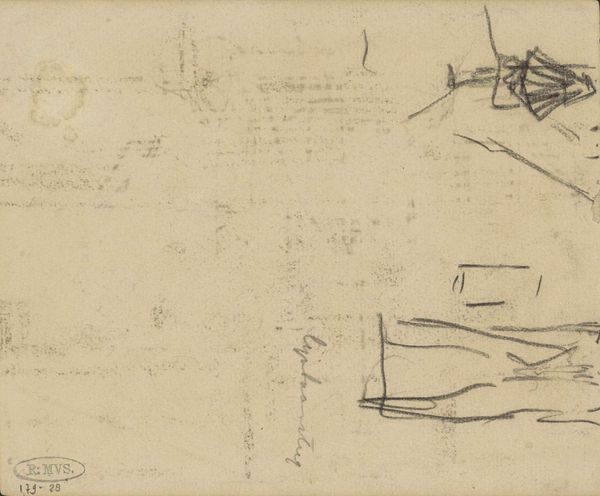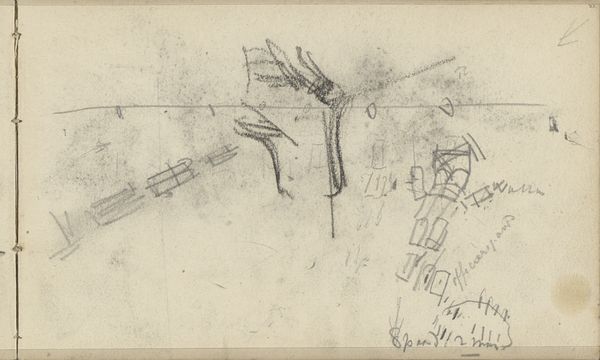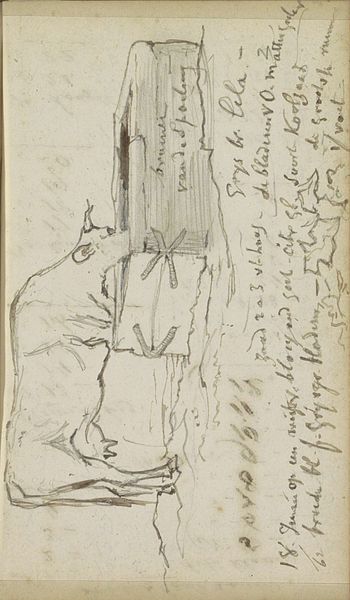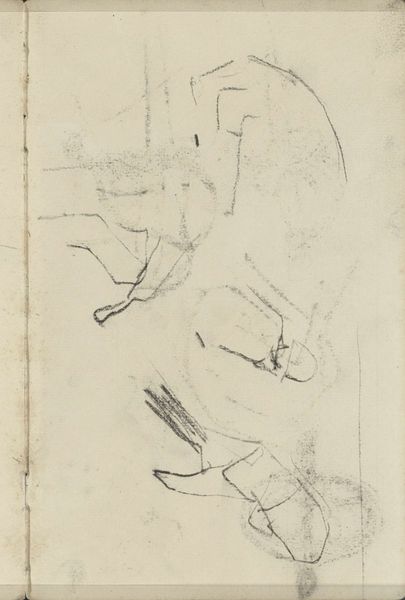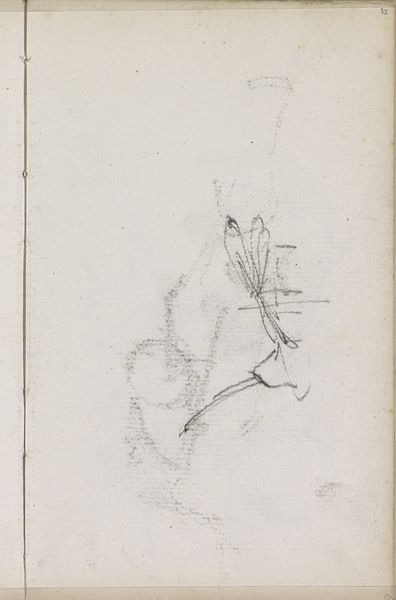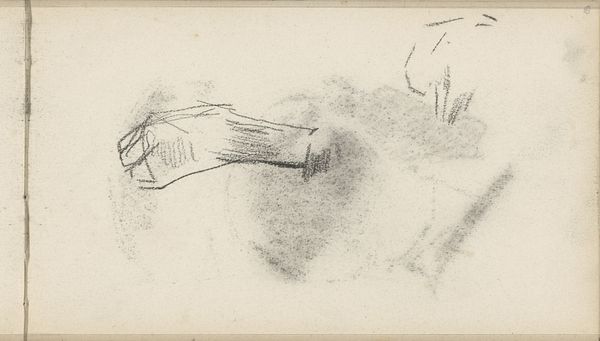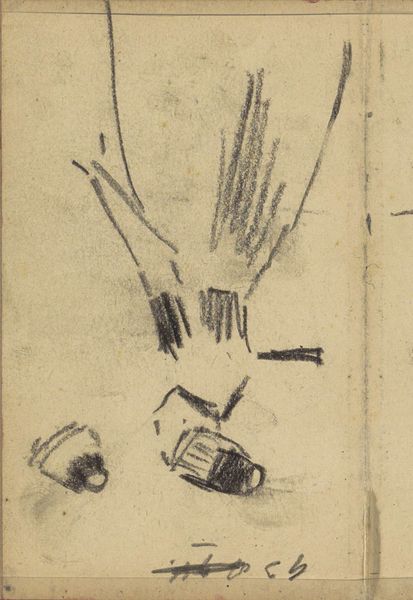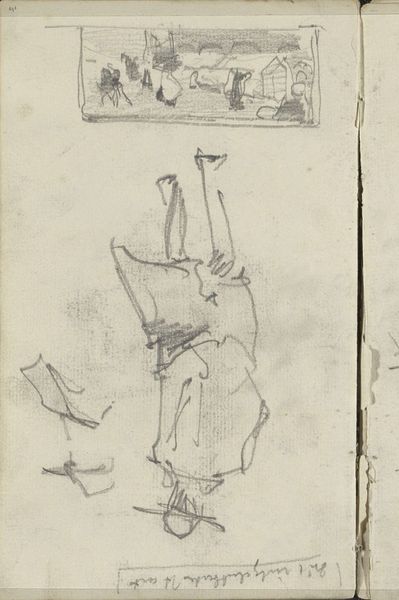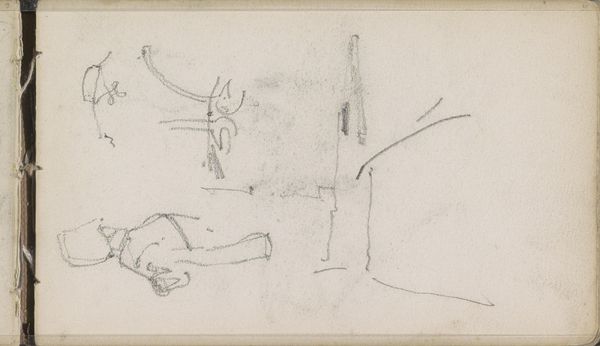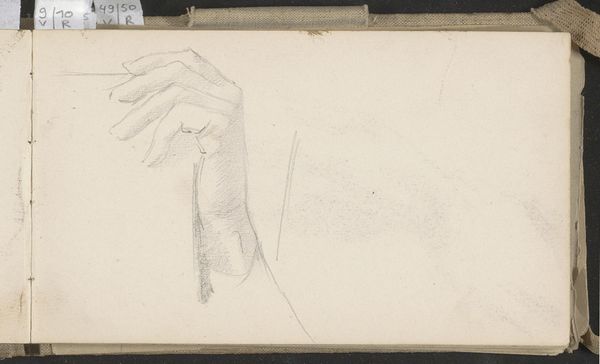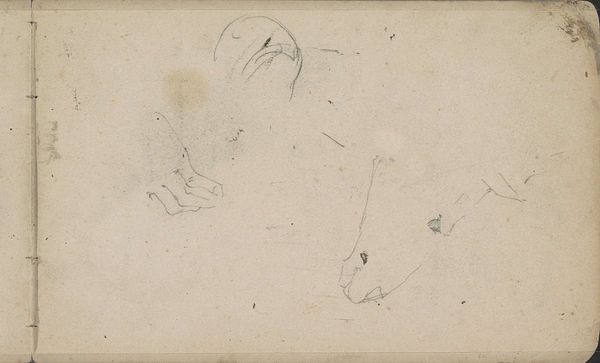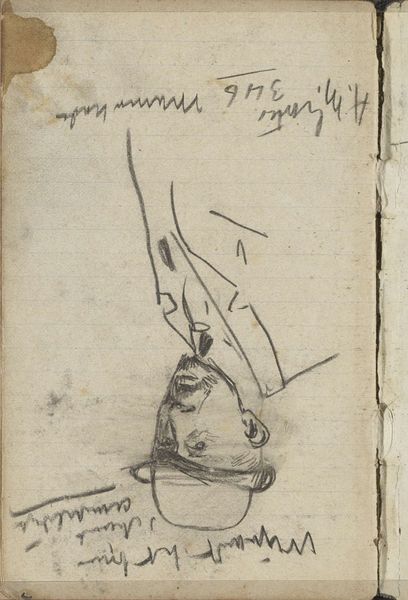
drawing, paper, pencil
#
drawing
#
aged paper
#
toned paper
#
quirky sketch
#
impressionism
#
pen sketch
#
sketch book
#
landscape
#
paper
#
personal sketchbook
#
sketch
#
pen-ink sketch
#
pencil
#
abstraction
#
pen work
#
sketchbook drawing
#
sketchbook art
Copyright: Rijks Museum: Open Domain
Editor: This is "Studie," a drawing by George Hendrik Breitner, made between 1883 and 1885. It's a very free and loose sketch on toned paper – almost like a quick visual note. I am drawn to its immediacy and how fleeting the captured moment seems. What do you see in this piece, with your knowledge of iconography? Curator: Indeed, its immediacy is compelling. Note how Breitner captures essential forms with such economy of line. Even in its unfinished state, we glean an understanding, not of concrete reality, but rather a subjective experience of it. This sketchbook-like quality offers a peek into the artist's mind and perhaps, what does this remind you of? Are you by any chance seeing symbolic representation? Editor: The stark simplicity of the objects reminds me of abstract architectural forms. The column-like objects feel quite symbolic of stability, almost reminiscent of Greek or Roman ruins. Curator: Precisely. Ruins represent the passing of time and the frailty of human achievements. But these can also represent continuity, rebirth, a quiet testament to the cyclical nature of existence. Could this resonate with broader anxieties of rapid industrialization, and a collective memory for what was? Editor: That's an insightful connection! So, a seemingly simple sketch becomes a vessel for deeper cultural anxieties and memories... Curator: Absolutely. The personal becomes a repository for collective cultural experiences and historical echoes, all captured in these lines. And the aging of the paper itself adds another layer to that effect! A good artwork contains encoded signs to be decoded over time. Editor: I never would have thought a seemingly simple drawing could hold so much! Curator: The beauty of art is precisely this: It makes one appreciate symbolic significance present in quotidian items. Now every time I see a ruin, I wonder, what is *that* a symbol of? Editor: Definitely! Now, when I look at sketches like this, I will be trying to unveil underlying themes. Thank you.
Comments
No comments
Be the first to comment and join the conversation on the ultimate creative platform.
